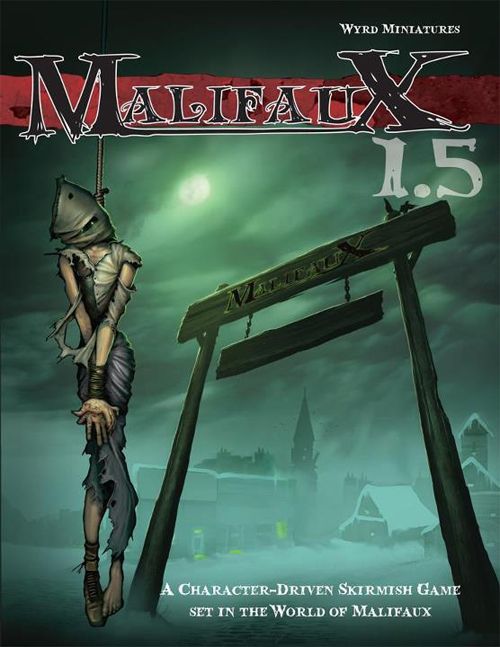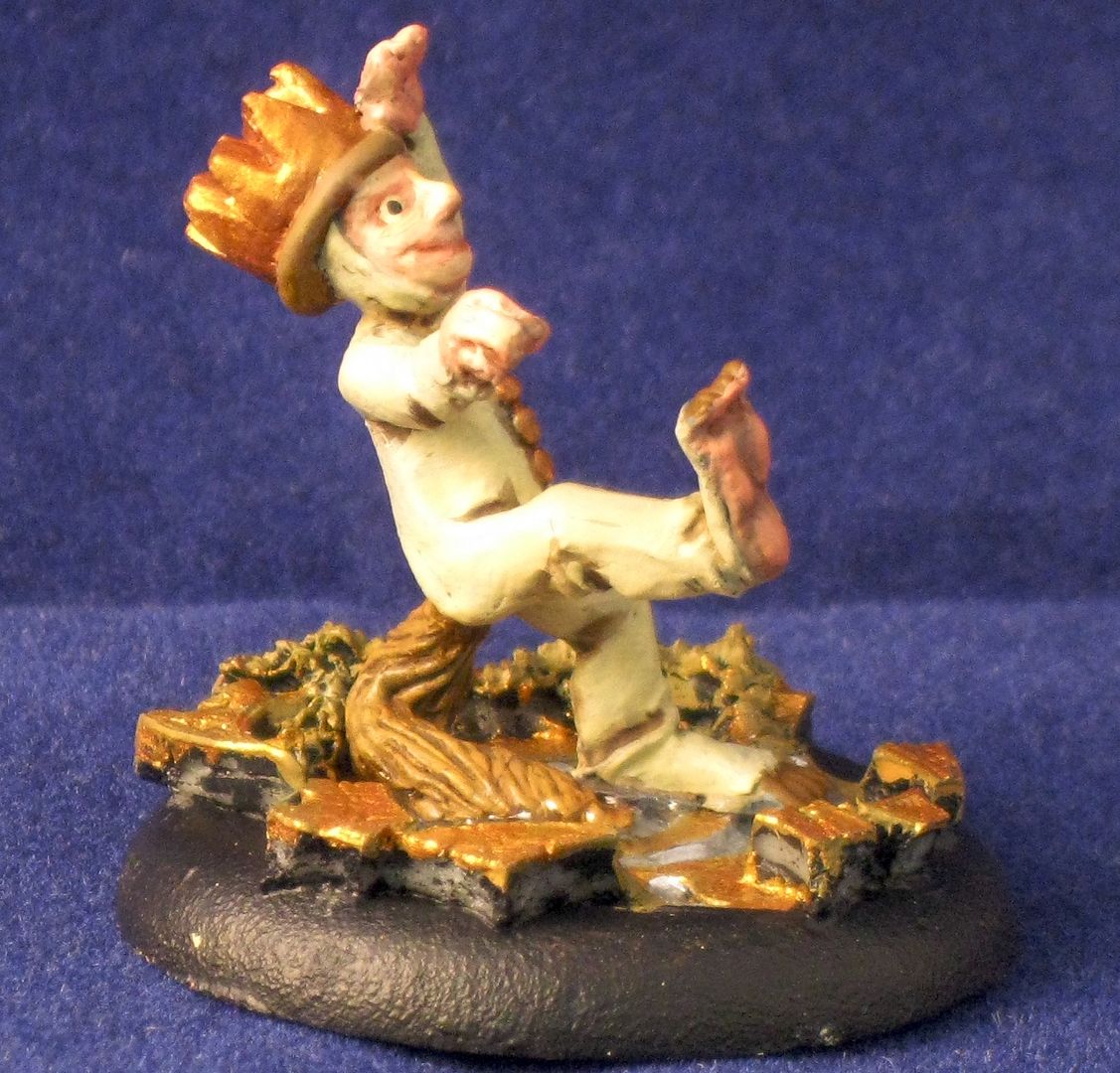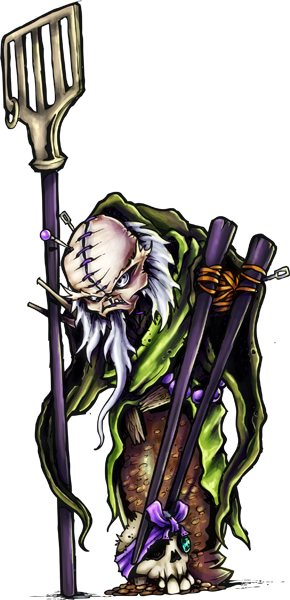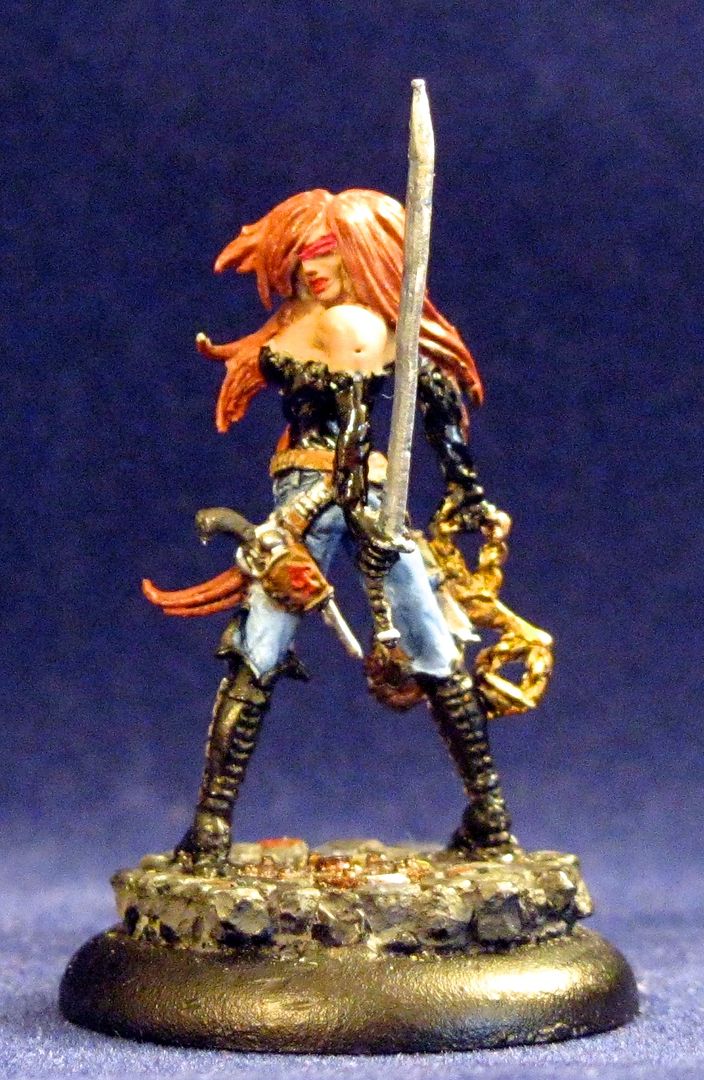What I love about Malifaux Classic Part 3
Occasionally inspiration strikes and I start to write and the words just come tumbling out. I figure if this happened more often in writing fiction I might actually be a published writer at this point. I hear that if you just keep pounding away at the keyboard you could eventually get better and people might want to read your drivel. Instead of going that route, I stick to the more mundane vanity projects such as this blog. Here we have the third and Final part of my look at why I love Malifaux Classic.
I have to admit that through the writing of this series of articles I have become emotionally conflicted overall. I suspect that there will be a fair amount of doom and gloom spouted once Malifaux V2 is released to the public beta, but I also believe that some portion of the community will push forward. I am not sure yet where I will end up, either trying to cling to Malifaux Classic or moving with the herd to the stockade Wyrd wants us to dwell in. I strongly suspect that the number of players for Malifaux Classic will dwindle over the future regardless, eventually making us extinct. Only time will tell, but I am looking forward to really comparing what is finally released to the game they have built to date.
So, what are the remaining portions of the article on what I love about Malifaux? These last few portions are some of the more innovative (in my opinion) and then I close up with a look at my recent loves in the Masters I have been playing and a final thought.
Soulstones
Soulstones are an interesting mechanic to the Malifaux game, and something that is fairly singular to Malifaux itself. I love that soulstones are an additional resource to track in the game that are limited to just a small subset of models overall. This provides a fantastic way to really separate the more powerful and special models in the world as thier models play on the table. One of the things that occurs is soulstones provide a potential increase in power for those truly influential characters via a mechanic where you can use a soulstone to flip an additional card in a duel to add to your total. I really appreciate both sides of this in the game. On the one side this allows a model to combine their statistic, a cheated high card, and the additional flipped card to create a duel that the normal run of the mill schmuck just cannot compete with. In this way the soulstone using model demonstrates their superior nature within the mechanics of the game. This is just cool in my opinion, and it really only works against "minion" type models. Honestly, this is one of the reasons I see that the "Masters" and true powerful characters in Malifaux have reached their stations within the power structure of their organizations. The second thing the soulstone mechanic allows is the ability for a soulstone user to be potentially competitive in "unwinnable" situations through some luck. One example of this is Colette using Magicians duel on the esteemed Von Schill. Colette is a caster with the very strong cast stat of 7 while Von Schill is a manly man who eschews magic with his paltry cast stat of 3. If Von Schill was required to perform a magicians duel with Colette relying simply on his stats he would be hopelessly outclasses and wrecked within the game. While this is likely to happen anyway, with the use of additive soulstones Von Schill is able to pull a proverbial Rabbit out of the Hat and actually could succeed against the Mystical Colette. These moments may be rare, but they become real Wow moments when they happen. Soulstones provide a nice mechanic for the game where lesser models can pitch their statistics and abilities against each other, but a soulstone user will always have an edge that the "normal guy" doesn't.
Dual Faction Masters
Malifaux Book 4, Storm of Shadows introduced a new type of model to the game, dual faction models. These were models who could operate effectively in two different factions of the game and they were cool. While there are some great minions in the game, I really like the Dual Faction mechanic for the Masters of the game. Dual faction masters for Book 4 were all part of the Ten Thunders faction which was newly introduced and then part of another one of the four primary factions. When it came to the masters, I felt this mechanic really demonstrated their back story of infiltrating the existing Malifaux organizations while still having ulterior motives they were working on accomplishing. This really rang true with me, as each of these Master's had part of their back story written to show that while their ultimate allegiance was to the Ten Thunders, they each had a compelling reason to work to goals of their secondary factions as well. This was further reinforced with their abilities, showing a split in their allegiance and how they worked well in two different situations with different crews. Each was able to bring along their faction specific allies when they worked for Ten Thunders, which to me represented a potential surprise to their allies who suddenly realized they were no longer working for the Guild or the Neverborn but were helping out this new organization. Keltheos and Nerd Elemental really hit the proverbial ball out of the park with the thought that went behind building these dual faction masters and how the models operated with different crews in game. Even those masters that may work better in their non-Ten Thunders faction were compelling with backstory to show why thier allegiance was deeper to that other faction. Others worked equally well as Ten Thunders or as non-10T, and worked differently when played in opposing factions. Overall, this was really well done and pushed it into the bits of Malifaux I love.
Dual model masters
Malifaux started in book 1 with a Master who was actually two models on the table. This was repeated in book 2, then again in Book 4 in slightly different ways. The tie between two masters was something that is built into the fluff and abilities in Hordes, but was not realized anywhere near as well as Malifaux has accomplished it. Viktoria in the Malifaux story was a bounty hunter who came through the breach and was "copied" by a Neverborn Doppelganger. She was able to slay the evil spirit of the Doppelganger while allowing the copy of herself survive. In the game this deep connection of a copied Master was demonstrated through a mechanic which allowed you to actually field both models in full master capacity on the table and make use of their interchangeability. The designers were able to do this in a truly unique and balanced fashion, and allow a real change in game play from other games. Book 2 followed this up with the second dual model master with the Dreamer and Lord Chompy Bits. Here we are introduced to a child, who while difficult to remove is not really hard to kill once you find a way to pin him down. This child is not really able to impact the world directly in the game, but can bring about the appearance of the very scary Lord Chompy Bits who is a very direct engagement threat. The two models are linked together in how they operate on the board, unable to exist without the other and operate as a linked pair. The way the rules were implemented really demonstrated the interdependence of the two models, who were still very separate and but tightly tied together. This interdependency idea was taken a step further in Book 4 when we are introduced to Jakob Lynch and Huggy. When they are designed, Huggy is the actual master while Jakob is built similar to a slightly more powerful totem overall. The difference with this dual master combo is that their roles are reversed and Huggy has the totem rule to demonstrate that his entire existence is tied to Jakob's well being. While Huggy can be killed and returned to the game multiple times, if Jakob is removed both models are removed all together. This twist on the dependance mechanic combined with the dual master nature of the models was genius in its implementation.
Final Thoughts
Ok, I am going to juggle around the order of the last two sections here a bit. I want to first thank everyone for their feedback over this article series, it is very humbling and greatly appreciated. Many of you have pointed out that there is no discussion of a comparison with Malifaux V2 in this article series. This is very intentional, as I really wanted to focus on what I love about Malifaux. I wanted to do this for a variety of reasons, not the least of which is that I am unhappy with the direction Malifaux V2 is taking. I really love Malifaux Classic and this series really helped me refocus on the areas that I love and why I love the game. As an interesting aside, it seems to have helped others who know me gain a deeper understanding that I actually enjoy this game (and am more invested in this game) than they previously realized. Despite what my wife says, I could write just as long about my love and passion for her or my family as I did here!
That said, I am not able (yet) to speak about the specifics of what I do not like in Malifaux V.2. I am continuing to provide very limited feedback to the Wyrd team via playtesting. The feedback I have received from Wyrd is that my comments and stance on Malifaux V2 is negative to the point of being disruptive to the playtest in general. I have been told that if I did not tone back my negativity I would be removed from the playtest.
***Redacted due to warning of NDA violation***
The public will be able to make their own opinions on the good and bad nature of this on and after May 31. At that time I will have the ability to be much more open and detailed about my opinions. Until such time, I am continuing to play Malifaux Classic and really enjoy the game. Everything in these articles is clearly my opinion, and should be taken as one persons opinion.
Favorite Masters to play and Why
After this much writing I wanted to take a little bit to talk about the Masters I love most right now. Anyone interested in seeing what my currently Malifaux collection looks like can use the link at the top of the page for a full list. I have actually played every Master on that list to some extent, with the exception of Ophelia who I need to get on the table. Throughout my experience in Malifaux, there is a list of Master's who really resonated with me overall. Here is that list, along with a small blurb about why.
Dreamer
It is fairly well known that Dreamer is my favorite model and master in the game. I love the fluff behind this guy, and love the idea of Lord Chompy Bits and how he interacts with the little boy who is the dreamer. I went so far as commissioning the very talented Garden Ninja Studios to sculpt me a custom Dreamer model as Max from Where the Wild Things are. I love the idea behind being able to deploy Dreamer on the table alone on turn 1, look at your opponents crew full of the baddest Malifaux has to offer and think to yourself... Yup, that's fair. This is not a comment about gaming balance as much as a quote from EricJ on a D6G episode early on. It really speaks to the use of the bury mechanic that Dreamer manipulates to manifest his crew of nightmares within the game. Overall his playstyle, theme, back story, and mechanics all came together for me as one of the best experiences in the game.
Yan Lo
I cannot express how much I have enjoyed playing Yan Lo since getting him on the table. I have not even begun to play him with his full compliment of a crew, lacking Toshiro from the line-up. Originally I heard about how Yan Lo would work at a high level and thought the idea of a Master animating constructs with spirits was an incredibly cool idea. Honestly, I was expecting more of a scene from Bedknobs and Broomsticks than what he ended up being. I finally got to put him on the table and start to play him and while he works differently than I originally expected, he is as awesome to play as I expected. Yan Lo's flexible in game play style via the use of his Chi and Path mechanic is incredibly enjoyable for me. I really like progressing him down different paths based on what is happening in the game and seeing how they all work out. In addition, his Ten Thunder's centric crew works really well for me, both when I take living models as the majority and when I load up on undead and ancestors. Yan Lo catapulted up my list of favorite masters far quicker than any other master in the game.
Colette
Colette was a surprise to me, I did not expect to like her when I picked her up at Gencon. I liked the way the models looked and had used some of my volunteer compensation to grab her full showgirl crew. I had played against Colette several times and did not think I would really enjoy her play style within the game. When I got back the painted models I felt compelled to put them on the table and try them out. This was one of the best decisions I have made in the game to date. Colette is all about trickery and movement in the game, being able to quickly move around the table by switching with the other models in her crew. I have heard a lot about the Coryphee being the foundation of a Colette crew, and while its a great model I actually prefer to play Colette with just groups of showgirls (not Coryphee). She is so much fun to play and has such a great look that even her complexity is something I feel can be overcome. I have especially enjoyed watching my daughter learn to play Colette, and pick up the mechanics of the game far quicker than I expected.
Pandora
I discovered at the recent Adepticon that I am apparently known publicly as a Pandora player. I would like to be surprised by this, but I just cannot bring myself to be overly surprised. Honestly, I am incredibly flattered to have become known for playing her and playing her well in the game. Pandora is seen by many players as a completely negative play experience. She is considered over powered by many players as well. What I find most interesting here is that she is also a book 1 master, in a community that considers many of the book 1 masters to not be competitive with book 2 and beyond masters. Overall, I do not enjoy the NPE perception of Pandora, but I do enjoy how she works. I actually enjoy playing both with and against Pandora in competitive and non-competitive games. She is a puzzle for me to figure out regardless of which side of the table she is on. I do admit that she is one of the easier masters to figure out how to play and one of the harder masters to figure out how to counter. There is a certain aspect of board control and "Magic the Gathering Blue Deck" built into her mechanics that I really like.
Lady Justice
Lady Justice was one of the early models that I picked up purely because of the look of her crew and her model. I became fairly skilled with playing Justice and really getting her to work well. Justice is a fantastic master with two really nice sculpts for her models. Overall she is pretty straight forward to play, but has enough complexity to really shine in key moments of a game. In addition she is able to utilize her abilities in such a way to completely outshine other models on the offensive, something that is further reinforced in her fluff. Justice works well with her own Death Marshals, and even better with the wider range of guild models. Overall, she is one of my favorites and easily makes this list.
Lucius
I came across Lucius when I actually sat down and started to read book 2 and look at what the guild picked up in the expansion. This means that looking at Lucius was after I looked at more compelling crews such as Dreamer and some of the other additions to the game. I love the way Lucius completely embeds and enables his crew to do more than they can do without Lucius leading. I do not often hire Lucius except as a leader of a crew, rarely using the "Lucius Slingshot" for models such as Justice or Sonnia. I really enjoy the synergy that Lucius brings to the guardsmen crew, getting the real feeling that this Guild Official is driving these common guardsmen to higher achievements simply though his leadership and presence. Lucius was very well developed in both the fluff and mechanically on the table to deliver on a full experience in playing him.
Avatar Sonnia
aSonnia is the only avatar I have listed here, and she is certainly not a master as the other models in this list are listed. Yes, Sonnia starts on the table as her Master form, but it was really the overall model for aSonnia that brought her to the table for me. I was not a big fan of the original model sculpt for Sonnia Criid. Funny enough, the part that I hated most was the lit cigarette in her fingers, which I could just not get past when I looked at her model. To be fair, I really like the look of her alternate model, which is more dynamic and looks great throwing the fireball. aSonnia is amazing however, fully fitting into her Tyrant possessing a Human form from the story and demonstrating that on the table. She has some of the most critical and best tricks that her basic master form has, while picking up some better rules and tricks with her Avatar form. I do not rush to manifest aSonnia, but certainly plan my game out around getting her on the table at the most effective moment. Overall, I had to add her to the list simply because her model alone convinced me to play the master, and then has kept me playing and enjoying her as one of my favorites.
Jakob Lynch
I was unsure about keeping Lynch in the list of my favorite masters because while I enjoy playing him it took a little more thought as to why. What was it that Lynch brought to the table that outweighed Zoraida, Lilith, Kaeris, Misaki, or Kirai? I really enjoy playing all those masters as well, although I would start to rate some further down the list for me than I expected. Lynch really grabbed the final place on this list (and he is the only one who is in any kind of "Order") heavily because of his mechanics. Lynch strikes me as a vanity project that Keltheos (Dan Webber) and Nerd Elemental (Dave Bowen) used to truly show what fantastic game and model designers they are. Jakob Lynch works in the game without actually ignoring any of the mechanics of the game and yet he "twists" every mechanic he interacts with. This is such a cool way to play that it has truly grabbed me, and is probably the second coolest thing I have found in the Storm of Shadows book. Jakob still cheats like other models, but gets to cheat last. Jakob still has a hand like other models, but has ways to greatly increase his hand. Jakob uses the Red and Black jokers just like everyone else, but he gets an extra red joker. Jakob even has a totem, but his totem/master relationship is reversed from how that normally works in the game. Jakob was built to have fluff to completely support this twisting of how he interacted with the mechanics, and then you feel how he works throughout playing him. For these reasons he is an utter enjoyment to play, and deserves a spot on my list of favorites.
























Again I like reading your thoughts! I can;t say I agree your feeling that we might loose a lot of Malifaux 1. Changes are part of the game. On the other hand I have experienced disappointing changes to other games I've played to the point that I lost interest.
ReplyDeleteAs for Sonnia, the sigaret in the hand of my Sonnia broke off, and I painted the remaining stub to look like a soulstone. Looks pretty nice, and a lot better then a sigaret!
As with your previous entries in this series, I agree with the mechanical and thematic elements you've elucidated here, particularly the addition of dual-faction masters. I wouldn't want multiple-allegiance masters to become ubiquitous, but limited addition of this mechanic adds character and flexibility.
ReplyDeleteI also appreciate you addressing why you cannot yet comment on second edition more directly until you're released from your NDA at the end of the month. I still don't see why you take such a negative view of the proposed changes, which generally seem well-considered, but I look forward to hearing why you think second edition is an attempt to round us up into a stockade. While this sentiment seems a bit extreme and whether or not I agree with you once the beta rules are released, I do appreciate your obvious passion and longstanding commitment to the game and your involvement in the play-test will only make the final version stronger. I'm also hopeful that you'll keep the Gamer's Lounge going, whatever the future brings (and hopefully Malifocused). Even compared among podcasts on a wide array of subjects, it ranks as one of my favorites.
Erik
+1. Awesome podcast, but I'm looking forward to some of the changes.
DeleteLuke
I mean this in the best of ways, much like the "Play Better" slogan.
ReplyDeleteCongratulations on winning Malifaux V1.X.
Now your going to have to get over it and get over yourself.
From this series of reflective articles it appears that you got a lot out of the current game, more than most people I would guess, and had a great time doing it. I can only hope that you got more out of it than you put in, or that you at least feel it was energy well spent.
Not everyone has as much time to spend on this game and memorizing every detail of what the models can do, which is what is required unless you want to feel like every game is a learning game or demo game. Not that we don't all enjoy learning new things, but I don't know anyone who's unhappy about the rules being streamlined. The new edition will also bring in a lot more new players, which is great for all of us.
ReplyDelete